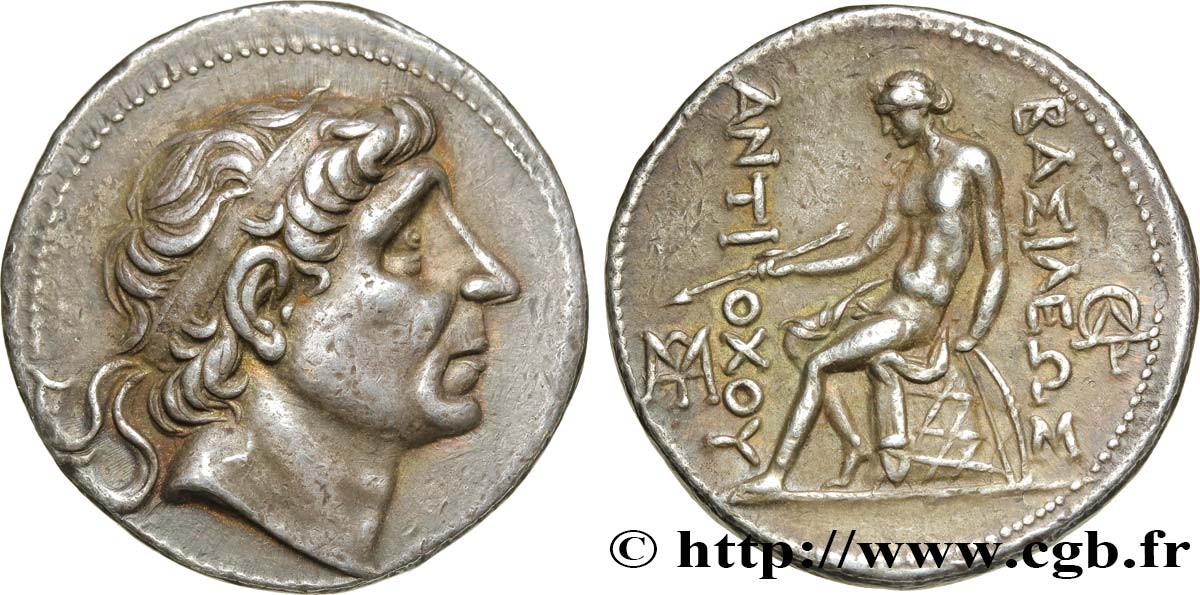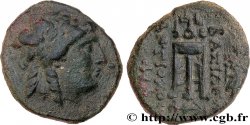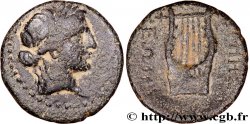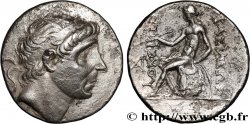Live auction - bgr_364555 - SYRIA - SELEUKID KINGDOM - ANTIOCHUS II THEOS Tétradrachme
You must signin and be an approved bidder to bid, LOGIN TO BID. Accounts are subject to approval and the approval process takes place within 48 hours. Do not wait until the day a sale closes to register. Clicking on "BID" constitutes acceptance of the terms of use of cgb.fr private live auctions.
Bids must be placed in whole Euro amounts only. The sale will start closing at the time stated on the item description; any bids received at the site after the closing time will not be executed. Transmission times may vary and bids could be rejected if you wait until the last second. For further information check the Live auction FAQ
All winning bids are subject to a 18% buyer’s fee.
All winning bids are subject to a 18% buyer’s fee.
| Estimate : | 1 500 € |
| Price : | 950 € |
| Maximum bid : | 950 € |
| End of the sale : | 29 September 2015 14:12:48 |
| bidders : | 1 bidder |
Type : Tétradrachme
Date: c. 261 AC.
Mint name / Town : Séleucie du Tigre, Babylonie
Metal : silver
Diameter : 29 mm
Orientation dies : 9 h.
Weight : 17,12 g.
Rarity : R2
Coments on the condition:
Exemplaire sur un flan large et bien centré des deux côtés avec les grènetis visibles. Portrait d’Antiochus Ier de toute beauté. Beau revers avec l’omphalos bien visible. Jolie patine de médaillier gris foncé avec des reflets dorés
Catalogue references :
Predigree :
Cet exemplaire provient de la vente Parsy du 2 décembre 2000, n° 48 et de la collection François Charrin
Obverse
Obverse legend : ANÉPIGRAPHE.
Obverse description : Tête diadémée d’Antiochus Ier, à droite.
Reverse
Reverse description : Apollon nu assis à gauche sur l'omphalos, tenant de la main droite une flèche et appuyé sur son arc de la gauche ; de chaque côté, un monogramme.
Reverse legend : BASILEWS// ANTIOCOU/ (MWT)/ (DWR)
Reverse translation : (du roi Antiochus).
Commentary
Monnayage posthume au nom et au type d’Antiochus Ier Soter, mais frappé au tout début du règne d’Antiochus II Theos. Ce type était déjà attribué à Antiochus II par E. T. Newell, tandis qu’E. Babelon penchait plutôt pour Antiochus Ier. Aujourd’hui les auteurs les plus récents dont A. Houghton donne ce type à Antiochus II. Ce type se rencontre dans plusieurs trésors : base de Sardes (IGCH 1299), Meydancikkale (Gülnar II, 2931).








 Report a mistake
Report a mistake Print the page
Print the page Share my selection
Share my selection Ask a question
Ask a question Consign / sell
Consign / sell
 Full data
Full data









